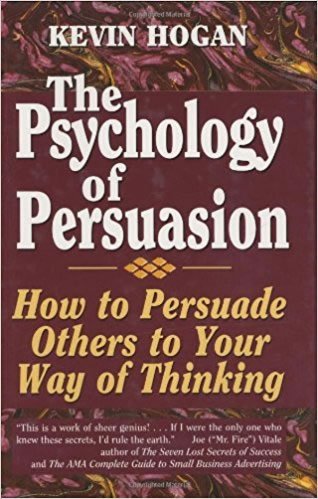“These are not the droids you are looking for…”
“Move along.”
And they passed by without a second thought on the part of the storm troopers.  Obi Wan Kenobi expected the bad guys to let Luke, C3PO and R2D2 pass without further inspection. He didn’t wonder if his directive would be followed he simply knew…
Obi Wan Kenobi expected the bad guys to let Luke, C3PO and R2D2 pass without further inspection. He didn’t wonder if his directive would be followed he simply knew…
It’s this knowing that triggers actions, thoughts and beliefs in the mind’s of others.
Of course this example is from fiction. Hardly enough to provide evidence that you and I can harness a similar “power.”
And I say “similar” because the chances that you and I can harness a universal energy field and use it to move objects…is unlikely in 2016.
But the identical experience of the power of expectation is itself far more common and PREDICTABLE than you might guess.
A 20 year study will be published later this year.
The findings about expectation are simple in the massive project.
If someone believes they are likely to be married within five years, they commit fewer delinquent acts in life. Being married obviously carries with it the sense of responsibility.
Think about this: Just EXPECTING to be married dramatically changes your behavior.
And this brings me back to one of the most important studies ever done.
I have shared this story a couple of times in the past at live events. It is worth repeating because I believe this was the first time the Jedi phenomenon was ever tested.
The research began immediately after the release of the original (real) Star Wars.
Here is Who You are Going to Be
The real purpose of the University of Minnesota study was to see if who you EXPECT someone to be influences that person’s SELF PERCEPTION and who they BECOME.
Here is how it played out. Proceed with caution. There are some pretty extraordinary discoveries here!
51 Men and Women who have never seen each other were paired to have a telephone conversation.
The participants were told they were going to be part of a Nonverbal Communication study that considers the process of how we become acquainted with people. (This frame that was shared with the participants is not true. It was necessary set up the study condition where two people talked on the phone but never saw each other.)
Before a phone call was initiated by each man, each woman had previously filled out a brief info sheet. “What is your major?” “What High School did you graduate from?” The kind of stuff that is 100% not important in getting acquainted. It was worse than meaningless chit chat.
The completed sheet was soon given to the man when he walked into a different room to call the woman whose survey he had been given.
Upon arrival, he had his photo taken and he was given a photo of a woman.
The photo he received was one random picture pulled from four possible pictures each of a different women whose average attractiveness was measured at 8.1 (1-10).
OR
In another test group he would have been given a photo of one of 4 women whose average attractiveness was 2.56. (A significantly less attractive woman.)
 In all cases, the photo he was given was not of the woman he had been paired with to call in the other room.
In all cases, the photo he was given was not of the woman he had been paired with to call in the other room.
After looking at the photo and quick info sheet of the woman he thought he’d be speaking with, he recorded individual impressions of the woman.
After the 10-minute conversation with her, he filled out another Impression Sheet about the woman.
Meanwhile, after the call, she filled out a similar form but it was all about her self perceptions. There were questions about how comfortable she was with the conversation. There were questions about how accurate a “picture” of herself her phone partner had formed, and how typical her partner was of men in her own treatment by the man.
Finally, she recorded her prediction of what the man recorded her personal attractiveness to be.
Later, 12 people assessed the woman’s side of the audio recording, which filtered out ALL of the parts spoken by the man.
In other words, these “judges” heard every word and breath she took and none of his. Simple enough.
When this task of the judges evaluating the conversational style of the 51 women was complete, the next stage of the study began.
At this point 9 other judges listened to just the man’s side of the conversation in a recording.
These Observer Judges also filled out Impression Sheets on the woman as had the man previously. The difference was – the Observer Judges had no photo.
What did the observer judges BELIEVE about the women they had just spent a full day listening to?
Frightening results…
Stunning Observations of Jedi Phenomenon
What were the results?

- The initial impression of the men after seeing the photo (and survey) but prior to the conversation did indeed show that the photo biased his initial overall impression of the woman. The men anticipated “her” to be more social, poised, humorous, socially adept…when they were shown a photo of an attractive woman.When shown the photo of the unattractive woman, the pre-call impression showed her on average to be unsocial, awkward, serious, socially inept.In other words, men assigned 17 of 21 personality traits the researchers predicted would be attributed to the woman based on her photo.But you already guessed that….. Here’s what happened next.
- The Listener Judges (Coders) ended up assigning the same traits to the women that the men did solely on the basis to listening to the woman’s side of the recorded call.
When a Man Viewed a Photo of an Attractive Woman?
Several days later the coders/judges heard a female voice that revealed personality traits almost the same as the man had perceived her.
When a Man Viewed a Photo of a Less Attractive Woman?
If a man had seen a photo of one of the unattractive women, the judges ascribed very different personality characteristics to that woman based on only her 4 minutes of recorded conversation. And remember…there were 51 pairs!
The researchers (Mark Snyder, Elizabeth Tanke, Ellen Berscheid, Journal of Personality and Social Psychology V. 35 pp 656-666) concluded after a thorough statistical analysis that,
“What had initially been reality in the minds of the men, had become reality in the behavior of the women they interacted with- a discernible reality by even naive observer judges, who had access to only tape recordings of the women’s contributions to the conversations.”
Coders/Judges’ Perceptions Affected by the Photo (that the coders NEVER SAW) the Man Viewed
 This is where things become even more spooky.
This is where things become even more spooky.
The coders also rated the appearance of the men!
Coders decided (unwittingly) that the more attractive the photo of the woman, the more attractive the man was!
But why? How did the coders rate the personality traits of the men!?
Based on only the men’s side of the conversation, the other group of coders who had not heard the women or seen a photo, they found what turned out to be this:
If the man was looking at the photo of an attractive woman (unknown by the coders and only discovered upon final collection of all the information!) HE was ascribed traits of higher physical attraction, more confident and more animated than their counterparts who saw a photo of an unattractive woman!
In addition, those who had seen the photo of the attractive woman were THEMSELVES seen as taking greater initiative, more comfortable, enjoying themselves more, and finally the observers believed that the women would see the man as attractive in contrast to those men who had seen the photo of the unattractive woman.
How does the woman’s perceptions of both herself and her former phone partner change?…
Women’s Self-Perceptions Affected by the Photo the Man Viewed
 Pause and think about the headline above.
Pause and think about the headline above.
How I view MYSELF is shaped by the picture I’m looking at right now.
My OPINION of ME is shaped and CHANGED by who and what I perceive YOU to BE!
In the study, The Attractive Target Women (determined ONLY by the photo the man saw! …whether they were or not “attractive,” we will never know) believed their partner saw them more accurately and the Unattractive Target Women (determined ONLY by the photo the man saw!… believed their partner did not.
In other words people perceive themselves to be have better character traits than the norm.
And then people decide whether you have judged them fairly or not by YOUR PERCEPTIONS that bleed through into conversation on many levels!
The implications are mind blowing.
The first thing I think about are the practical implications.
Simple Way to More Sales and Gaining Agreement
If you are male, what would happen if you had a picture of an attractive woman in view as you worked on the telephone setting appointments, consummating the business deal, or communicating with a woman for any reason?
It would seem likely that more appointments would be set, more deals would be consummated, and communication would be vastly improved.
And what of women who would communicate with men? Would the same strategy be effective? This has not been tested, but my guess is that it would.
And what are we to think about people in general?
Doesn’t the research imply that MY biases (positive or negative) change YOUR behaviors?
Doesn’t the research suggest that my expectations of you change your expectations of your SELF?!
That’s exactly what it implies.
And think about this:
The notion that a man’s belief about a woman’s attractiveness – a belief that has been held for one minute – can change how a woman’s voice and conversation is perceived by random people.
The other lessons here are many.
The Perceptions of Attraction
- Attractive people are ascribed positive personality and social traits that unattractive people are not.
- One person’s reality is communicated vocally in such a way that a belief held for one minute can transform another person into convincing others the person is not who they are but who they are seen to be by the invisible person they are in conversation with.

- Believing you are interacting with someone attractive changes you, your behavior, your attitudes. And the opposite is true as well.
- Your certainties and expectations about someone WILL impact them.
The Prophecy Effect
Let’s look at that “Prophecy Effect.”
Does what you think REALLY shape others?
Each day, on average, you run into 100 people somewhere. Each of those people sees you in some way. Do they ALL shape your behavior? And if so, wouldn’t that create you and me in the image of how society as a whole sees us?
I see a problem here. You’ll need to help me with this one… If the Dallas Cowboys expect to win and their opponent (The Arizona Cardinals) to lose that should mean Dallas has a BIG EDGE. BUT! The Cardinals expect to win and the Cowboys to lose…
So how do we know WHICH expectations actually change behavior and attitudes?
How do you know what specific things to focus on when you talk with someone?
Is there really an almost foolproof way to predict the future?…
The Power of Prophecy?
One well done study makes an idea interesting. A second that studies the same phenomenon in a completely different context gives you information to LIVE BY.
How REAL is the JEDI MIND in the real world?
Here’s the answer…and also how it WORKS for you.
Two psychologists visit a 15-week military Boot Camp for experienced soldiers in Israel. They want to know what a commanding officer’s expectations will do to those he teaches and trains in a Boot Camp.
 105 soldiers were randomly assigned one of three one word labels – by the psychologists visiting Boot Camp.
105 soldiers were randomly assigned one of three one word labels – by the psychologists visiting Boot Camp.
The Psychologists met with the commanders who would be training the 105 trainees.
The meeting was held with the Base Commander and the four instructors. The Base Commander was the only other person who knew what was about to happen.
The psychologists explained that they had a complex method that they had utilized to predict the Command Potential of the 105 trainees.
The psychologists recorded one of three words in each soldier’s portfolio.
- “High”
- “Regular”
- “Unknown”
The Psychologists departed and only returned after 15 weeks had transpired.
The soldiers were to be evaluated on theoretical knowledge of combat tactics, topography, standard operating procedures and practical skills of navigation and firing a weapon.
15 weeks of advanced training for these long-time soldiers whose Combat Potential was randomly assigned passed and the tests were administered.
One week after the psychologists first visit, the Commanders ranked the Command Potential of the trainees.
After this week, the influence of the instructions they received from the psychologists and the 1-9 ratings they recorded were already telling.
The four instructors had already ranked those soldiers who the psychologists noted would have “High Command Potential” as indeed having the highest Command Potential.
 Those soldiers that the psychologists had noted would have “Regular Command Potential” had dramatically lower initial rankings after the first week.
Those soldiers that the psychologists had noted would have “Regular Command Potential” had dramatically lower initial rankings after the first week.
Here’s the exact numbers using the 1 – 9 scale, that were reported by the Commanders, averaging each of the soldiers.
- 6.83 High Command Potential
- 5.31 Unknown Command Potential
- 4.32 Regular Command Potential
Because of the dramatic differences, the psychologists took several precautions with the Base Commander to make sure the trainees were treated well and their future career would not be negatively impacted by what happened in the training. These were NOT recruits. These were all skilled long time soldiers!
How did the single word change scribbled in a folio change results of human behavior across seven key training areas?!?!
At the end of the 15 weeks, the instructors had collected all the information from independent military trainers who tested the recruits. They then assigned a Cumulative Performance score ranking to each soldier.
(The Commander’s expectations of the soldiers became the soldiers’ reality as you can see from the below objectively tested CP scores.)
Those numbers for Trainee Performance?
- 79.98 High Command Potential
- 72.43 Unknown Command Potential
- 65.18 Regular Command Potential
Stunning and dramatic.
Remember there was no REAL difference among the skilled soldiers. They were all top caliber.
The researchers (Dov Eden, Abraham Shani; Pygmalion goes to Boot Camp; Journal of Applied Psychology V. 67 N. 2) findings were mind boggling.
Actual Beliefs Change Based Upon Random Prediction
It was now obvious that a Commander’s expectations would change and shape the performance of experienced men with 11 years average each in the military.
More remarkable, the experienced Instructors on base didn’t believe the results and didn’t believe the fact that the men were randomly assigned Command Potential by the Psychologists!
The power of REAL expectation is to be taken seriously.
Certainty is Key to The Power of Expectation
These two studies highlight the fact that no one is doing “affirmations,” like “I think I can,” “I think I can.” These people are convinced about the people they are communicating with.
And for the record, just what did the statistical analysis show the Instructor Expectancy to CAUSE in the study?
The variance in the results for Performance was 73% based on Instructor Expectancy.
If you put that factor into the terms of a classroom, then the difference between a child getting a “B” and “D” COULD mostly be generated from the teacher. And of course, you’ve heard me tell THAT story for years.
 Thinking positively about someone isn’t going to cut it in the real world.
Thinking positively about someone isn’t going to cut it in the real world.
In fact, it could easily have the opposite effects.
However, one piece of compelling evidence that causes someone to have certainty about another…something as simple as an errant photo or a word transcribed from a psychologist’s notes to a military file folder…can change someone’s perceived personality, their actual performance, and where they end up in life.
A word.
A phrase.
A photo.
A random prediction.
A Jedi Mind…





















